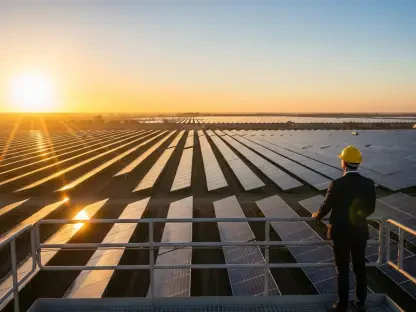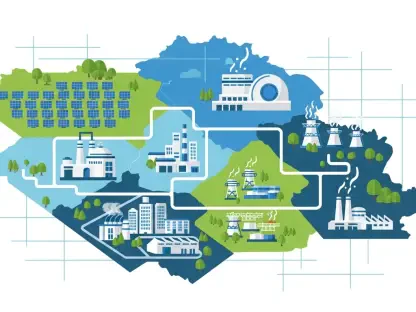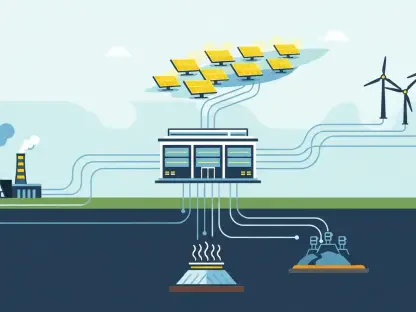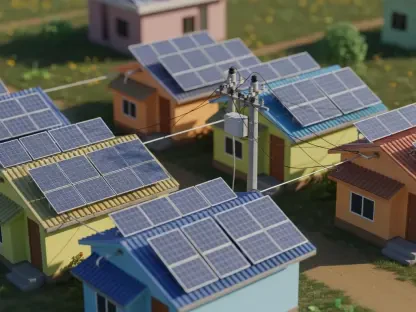Introduction to Battery Storage and Renewable Energy in Connecticut
Imagine a future where clean energy powers homes across New England, with battery-storage systems acting as the backbone to ensure reliability even when the sun doesn’t shine or the wind doesn’t blow, a vision that seemed within reach for Connecticut until a major setback occurred. The cancellation of a significant project has highlighted the challenges in this transition. Battery storage has emerged as a critical component of the renewable energy landscape, providing the ability to store excess power from solar and wind sources and release it during peak demand, thus stabilizing the grid. This technology is pivotal for reducing reliance on fossil fuels and meeting ambitious carbon reduction targets across the region.
Connecticut, like many states, has positioned itself as a leader in the transition to clean energy, with projects such as the Windham Energy Center promising to bolster grid resilience. Such initiatives are essential for supporting the integration of renewable sources into the energy mix, particularly in a region prone to variable weather conditions. The role of storage technology cannot be overstated, as it addresses intermittency issues and ensures a steady power supply, aligning with both state and regional sustainability goals.
Key players in this sector, including Sunflower Sustainable Investments, an Israel-based developer, have been driving innovation and investment in battery storage. Their involvement underscores the growing importance of storage solutions in the broader energy transition. As the industry evolves, the challenges faced by projects in Connecticut highlight the complexities of scaling up this vital technology amidst economic and political headwinds.
Background of the Windham Energy Center Project
Project Scope and Objectives
The Windham Energy Center, planned for Killingly, Connecticut, was set to be a 325-megawatt battery-storage facility with a substantial budget of $200 million. Its primary purpose was to store renewable energy, particularly from offshore wind sources, and redistribute it to the grid during periods of high demand. This approach would have helped balance energy supply and demand, ensuring stability in a region increasingly reliant on intermittent clean energy sources.
The project operated on a merchant model, a strategy that involves buying electricity at low prices during off-peak times and selling it at higher rates during peak demand. This business model aimed to capitalize on market fluctuations, with a particular focus on harnessing power from offshore wind farms along the Atlantic Coast. Such a setup was designed to maximize financial returns while supporting the integration of renewables into the energy ecosystem.
Initial Promise and Regional Impact
At its inception, the Windham Energy Center held immense promise for both economic and environmental benefits. During its construction phase, it was expected to create up to 40 jobs, providing a temporary boost to the local economy in Killingly. Beyond job creation, the facility was poised to enhance energy resilience across New England, a region often challenged by extreme weather and fluctuating power needs.
Moreover, the project aligned closely with Connecticut’s clean energy objectives and the broader regional goals of reducing carbon emissions. By facilitating the storage and dispatch of renewable power, it could have played a crucial role in decreasing dependence on fossil fuel-based backup systems. Before encountering obstacles, this initiative was seen as a model for how battery storage could transform energy infrastructure in the area.
Economic Challenges Leading to Cancellation
The cancellation of the Windham Energy Center was heavily influenced by mounting economic pressures that rendered the project unfeasible. A significant factor was the sharp rise in capital costs, estimated to increase by 30% to 50%, largely due to tariffs imposed on imported battery components such as graphite and copper. These tariffs, targeting goods from major producers, drastically inflated the expenses for a project already carrying a hefty price tag.
Another critical economic barrier stemmed from China’s dominance in the global battery cell market, accounting for over 80% of utility-scale production. With trade policies tightening and tariffs impacting the cost of essential materials, developers faced unprecedented challenges in maintaining budget projections. This situation highlighted the vulnerability of projects reliant on international supply chains in a protectionist trade environment.
Additionally, the merchant business model adopted by the project introduced inherent financial risks, as market price fluctuations could undermine profitability. Consultant Jonathan Milley pointed out that such a model, while potentially lucrative, became far too risky under the prevailing economic conditions. The combination of escalating costs and market uncertainty ultimately tipped the scales against the project’s continuation.
Policy Uncertainties and Federal Rollbacks
Federal policy shifts have created a turbulent landscape for renewable energy projects, with significant repercussions for the Windham Energy Center. Under recent administrative changes, tax credits for renewable initiatives have been rolled back, disrupting financial planning for developers. Moreover, new requirements for domestic sourcing of materials added layers of complexity and potential cost increases to an already strained budget.
Yale economist Ken Gillingham emphasized that these policy changes have made long-term planning nearly impossible for projects in the battery-storage and renewables sector. The uncertainty surrounding federal support has left developers grappling with how to navigate a landscape where incentives and regulations shift unpredictably. This lack of stability has proven particularly detrimental to initiatives still in the planning stages.
Compounding these challenges was broader opposition to offshore wind power at the federal level, which directly undermined the project’s energy supply strategy. With offshore wind farms intended as a primary source of power for storage, the downturn in this sector due to policy headwinds diminished the facility’s operational foundation. Such political barriers illustrate the broader difficulties faced by clean energy projects reliant on interconnected renewable systems.
Local and Bureaucratic Hurdles
In Killingly, local challenges further complicated the path forward for the Windham Energy Center. A key issue was the need to reopen an existing certificate of approval from the Connecticut Siting Council, a process that introduced significant delays. These bureaucratic hurdles slowed progress at a critical juncture, leaving the project vulnerable to external pressures.
The site’s prior designation for a natural gas plant by NTE Energy added another layer of complexity to the approval process. Transitioning the intended use of the location to a battery-storage facility required additional scrutiny and adjustments, further prolonging the timeline. This situation underscored the difficulties of repurposing industrial sites for renewable energy projects under existing regulatory frameworks.
As delays accumulated, economic and political challenges intensified, creating a perfect storm that the project could not weather. The prolonged approval process effectively allowed external factors, such as rising costs and policy shifts, to erode the project’s viability. Local obstacles, though not the sole cause, played a significant role in the ultimate decision to cancel.
Broader Implications for the Renewable Energy Sector
The cancellation of the Windham Energy Center is not an isolated incident but rather a reflection of systemic challenges facing the renewable energy sector across the United States. Sunflower Sustainable Investments also withdrew similar battery-storage projects in Texas and South Carolina, signaling a retreat by foreign investors wary of the mounting uncertainties in the American market. This pattern raises concerns about the attractiveness of the U.S. as a destination for clean energy investment.
Industry experts have noted a chilling effect on future projects, particularly those in the planning or pre-construction phases. The unpredictability of costs, policies, and market conditions has made stakeholders hesitant to commit resources to new initiatives. This hesitancy could stall the momentum needed to expand renewable energy infrastructure at a pace required to meet national sustainability targets.
Furthermore, the loss of such projects threatens to slow the deployment of critical clean energy solutions like battery storage, which are essential for grid modernization and carbon reduction. The broader impact may be felt in delayed progress toward energy independence and resilience, particularly in regions like New England that stand to benefit most from advanced storage technologies. This trend underscores the urgent need for a more predictable and supportive environment for renewable energy development.
Conclusion and Future Outlook
Reflecting on the cancellation of the Windham Energy Center, it became evident that a confluence of rising tariffs, policy uncertainties, federal opposition to wind power, and local delays derailed a promising initiative. These factors combined to create an insurmountable barrier for developers who had envisioned a transformative addition to Connecticut’s energy landscape. The decision to withdraw marked a significant setback for regional clean energy ambitions.
Moving forward, actionable steps must be prioritized to prevent similar outcomes for other projects. Streamlining local approval processes could mitigate delays that exacerbate external pressures, ensuring that bureaucratic hurdles do not compound economic or political challenges. Additionally, establishing stable federal incentives and clearer guidelines on sourcing requirements would provide developers with the certainty needed to plan effectively.
A renewed focus on fostering collaboration between state and federal entities could also pave the way for innovative solutions, such as public-private partnerships to share risks and costs. Addressing trade policy impacts on critical supply chains remains essential to keep project budgets manageable. By implementing these measures, the renewable energy sector can build resilience against future disruptions and maintain momentum toward a sustainable energy future.









